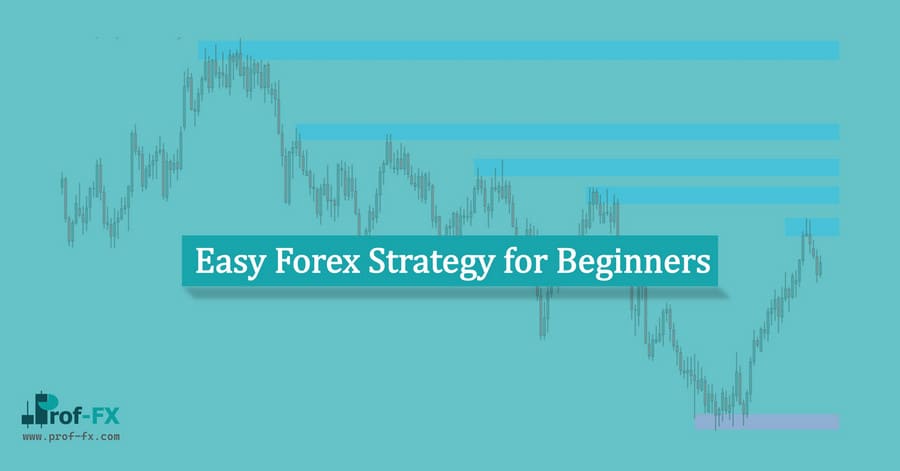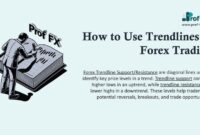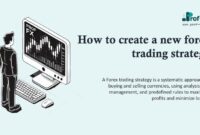Today, I want to share a forex trading strategy with you, called WhaM. This trading strategy is so easy to use, even your parents would be able to trade it. I reckon even your dog could trade this. Really, it’s super straightforward.
This trading strategy is not created by me. I read about it a long time ago from Will at wmd4x.com, who originally came up with these patterns and found a way to trade them. This is my interpretation of the system and how I currently trade it.
It’s one of the strategies I’m actively trading and it’s by far the one with the least moving variables. No indicators. No complicated rules. I don’t even use candlestick charts for this strategy! And most importantly: it just works incredibly well.
If this sounds like a sales pitch, it’s only because I always get excited telling people about it. Don’t worry, I’m not selling anything. Everything you need to know to adopt this strategy is right here, in this article.
By sharing this strategy for free, I’m hoping that some people will benefit from it. I also want to show that trading systems don’t have to be complicated and trading consistently and profitably is absolutely possible, given proper rules.
Let’s get to it, shall we?
The WhaM forex trading strategy
Core concept
The WhaM forex trading strategy is a strategy that uses specific chart patterns as the base for low-risk entries on trades with a high probability of success. Specifically, we will look at double tops and double bottoms that look like the letter M or W. Once such a pattern is identified, we will take an entry at the nose of the pattern (the middle of the letter). I trade it on the 4H chart, but it also works on higher and lower time frames.
It might be worth noting that I have about a 65% win rate on this system, with an average risk to reward ratio of of 1:1.2.
Preparation
When trading this system, you will want to start out with clean line charts. The reason we use line charts and not candlestick charts is very simple: it allows us to focus on the things that matter. We want to see the patterns as clearly as possible. While candlestick charts provide a lot of useful information, we won’t initially need this level of detail. In fact, the “verboseness” of candlesticks will dilute our pattern search process, so we will not use them, to begin with.
Here’s an example of a chart (on TradingView) that is set up to trade the WhaM system.
At some point, it is helpful to switch to candlestick charts, since line charts will not always show us how far the wicks of candles reach. In order for us to determine whether to enter, the stop loss and the take profit, it can be useful to switch to candlestick charts.
No indicators are needed for this trading strategy.
The patterns
So let’s get to it! As said, we look for two types of chart patterns: double tops and double bottoms. Not only that, but they need to be shaped like the letter W or the letter M (see where that catchy WhaM name comes from?). Once we have found such a pattern, we set a pending buy (for W) or sell (for M) at the nose of the letter (the middle bit).
The W pattern
There are some more details (which I’ll cover in a moment), but that’s basically it! Let’s look at an example of an EURUSD chart:
See the clean W shape? That’s exactly what we’re looking for. If you check your charts, you’ll see that this pattern happens fairly often.
If we would have set a pending buy at the nose of the W pattern, what would have happened? Let’s see how that would have played out (by the way, I’m using ForexTester 3 for the screenshots. If you’re looking for the best software to do forex back- and forward testing, that’s the one you’ll want):
The M pattern
Now, don’t go jumping into every W and M pattern you see on your charts just yet! There are a few things that are important when we’re looking for the best W and M patterns setups and I’ll get to that in a minute. For now, let’s have a look at an example of a good M pattern:
As you can see, I have set a pending order (a sell limit order) at the nose of the M pattern, with a stop loss above the M pattern and a take profit below the M, for a risk to reward ratio of 1:1 (we’ll get to stop loss and take profit levels in a minute). Let’s see how it turns out:
And we have a winner! Our pending sell order got triggered when the price retraced temporarily, only to plummet down and take out our take profit level.
At this point, I’d like to invite you to switch to line charts and have a look at your own charts. Try to find similar W and M patterns and see how the price behaves afterwards. Does the price often return to the nose of the pattern? Is there often a reaction once the price reaches this point? Are there also W and M patterns that don’t work? What do you think is important when looking for good W and M setups?
Why this works
Now, if you’re anything like me, this is the point where you get suspicious.
Why would a simple thing like the shape of some letters actually work as a profitable forex trading strategy? Fair point, that’s why I want to get into detail on why exactly this works.
1. The double top or double bottom
Regardless of the W or M pattern, double tops and double bottoms are a powerful existing chart pattern. Plenty of traders have been very successful in using double tops and double bottoms to trade trend reversals. One of the systems I trade next to this is a reversal system, and double tops and bottoms are one of my favourite chart patterns (next to head & shoulders and triple tops or bottoms).
Once a double top or double bottom occurs, it is often followed by a change in price direction. The WhaM trading system only places trades in the direction of that reversal indicated by the double top or double bottom.
Simply put: double tops and double bottoms just work. That’s not me inventing something, they are one of the most fundamental chart patterns around.
2. The nose is a natural support/resistance zone
As the W and M patterns are formed, price finds support (for the M pattern) or resistance (for the W pattern) in the nose. There is an often strong reaction around that zone where buyers and sellers will battle for the direction of the price.
When the W and M pattern is completed, however, that level has broken. The support has turned into resistance and the resistance has turned into support. Price will often retest those specific levels, which is why the WhaM trading system works.
The retest of such a level is often known as a “break and retest” since a level that previously held is now broken and retested. Plenty of traders exclusively trade break and retest patterns, so even this can be a very good and profitable trading system on its own.
Timeframe
I’m trading this system on the 4H charts. I have experimented with this method on the daily chart, this also works very well. It is, however, a bit too slow for my liking.
Trading it on lower time frames also works, but as with most strategies, the lower the time frame, the lower the win rate. On the other hand, a lower timeframe might give you more opportunities to enter. This enables you to play out your edge more often, which is a benefit.
Entry
Once a W or M pattern has formed, you can put a pending buy or sell at the nose. Before I do so, however, I check the following things. While these checks are mostly optional, I have found that following them will give me a larger win-rate.
1. Size of the pattern
You’ll want to look for WhaM patterns whose size are in proportion to the overall market movement. Since that might not be very descriptive, let me give you an example. The chart below contains a W (or M, depending on how you look) pattern, but it is much too small in the overall context of the price action of the past period.
A good rule of thumb is: if the pattern looks like the tiny ears of a cat, skip it.
On the other hand, the following W-pattern has a good size:
2. Cleanliness of the pattern
Every time you find a WhaM pattern, think to yourself: Is this really a clean W or M-shaped pattern? It’s very easy to kind of see the letters W or M in daily chart action, but that doesn’t mean it’s a good WhaM pattern!
The examples at the beginning of this article are clean. Conversely, look at the following examples:
Of course, you can recognise a W or M in these, but they are really not clean enough to be traded. Ideally, you want to see a long first leg in one direction, then the pattern and then a long final leg in the opposite direction.
3. Sharpness of the nose
Ok, this might sound weird, but hear me out. The stronger the initial reaction that forms the nose, the more likely the setup will work. You will want to see a sharp reaction, with the price just touching a level and bouncing back.
Example of W pattern without sharp nose:
What you should avoid are M and W patterns where the price has been lingering at the nose. If the price seems unsure of the direction and is maybe ranging a bit around the level, avoid taking the trade. It means that there is no clear majority of either buyers or sellers and the level at the nose is not very strong. This, in turn, means that it will be less likely that we see the reaction we want.
4. Space before price reaches the nose
In my experience, the patterns work best if it is the first time that the price reaches the nose of the WhaM pattern again. What I mean with “space before” is that after the W or M pattern has formed, I like to see price move away a bit at first before it returns to retest the nose and fills our pending order. If just before the price reaches the nose it kind of drifts around that area, the pattern doesn’t always seem to work as well.
Stop loss
The stop loss can usually be placed a few pips above the M-pattern or below the W-pattern. However, this is where it’s sometimes useful to have a look at the charts using candlesticks since the candlesticks give you a better picture of the extremes of the W and M patterns. Consider for example the following chart. On the left side, we use a line chart and on the right side, we’re using a candlestick chart:
If we were to just set our stop loss levels using the line chart, we might have risked placing them too close to our entry. Instead, it would be better to place them above the wicks of the candles. If the price returns to that area, it’s not uncommon to test previous highs or lows. Putting our stop loss a little bit beyond that level will give us a better chance of not being stopped out, as we can see here:
I’m not using a trailing stop or early move of the stop loss to break even with this system.
Take profit
The take profit should be at least the size of the stop loss, giving you a risk to reward ratio (R:R) of 1:1. Often, if the retest of the nose triggers a sustained move in the opposite direction, we can see that a R:R of 1:2 would also work quite well. You’ll reduce the win rate of the system by doing so, but since the payoff is better, it is something you can consider.
The take profit level could also be determined based on the relative strength of the level of the nose. It might very well be that the level of the nose is exactly at a strong zone of previous support or resistance. In that case, it would be more acceptable to use a bigger reward-to-risk ratio, as we can anticipate a strong reaction at that level.
Risk Management
As I do with all the forex trading strategies I use, I employ a strict 1% of equity rule as the maximum risk per trade. This means that I first will decide where my stop loss should be (based on the pattern). Then, I will calculate my position size in a way that I won’t risk more than 1% of my account balance. This ensures that my equity curve increases smoothly and potential drawdowns will never get too large.
Conclusion: the WhaM forex trading strategy
This forex trading strategy is surprisingly simple. Given the rules and considerations I’ve described above, it is quite easy to understand and implement. If you decide to give this system a go, I urge you to not just take the things I said for granted, but instead, do your own due diligence and test the system for yourself. You’ll see that it can give very decent returns.



















